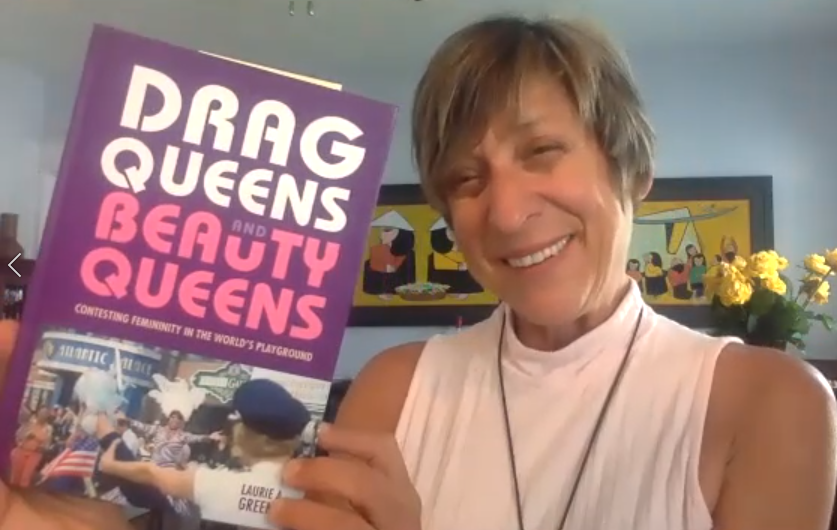
PRIDE MONTH SPECIAL Drag Queens and Beauty Queens: Contesting Femininity in the World’s Playground.
by Laurie Greene
The Miss America pageant has been held in Atlantic City for the past hundred years, helping to promote the city as a tourist destination. But just a few streets away, the city hosts a smaller event that, in its own way, is equally vital to the local community: the Miss’d America drag pageant.
Drag Queens and Beauty Queens presents a vivid ethnography of the Miss’d America pageant and the gay neighborhood from which it emerged in the early 1990s as a moment of campy celebration in the midst of the AIDS crisis. It examines how the pageant strengthened community bonds and activism, and how it has changed now that Rupaul’s Drag Race has brought many of its practices into the cultural mainstream. Comparing the Miss’d America pageant with its glitzy cisgender big sister, anthropologist Laurie Greene discovers how the two pageants have influenced each other in unexpected ways.
Drag Queens and Beauty Queens deepens our understanding of how femininity is performed at pageants, exploring the various ways that both the Miss’d America and Miss America pageants have negotiated between embracing and critiquing traditional gender roles. Ultimately, it celebrates the rich tradition of drag performance and the community it engenders.
On your program, Laurie can answer questions like:
What are “camp sensibilities” in drag performance and gay culture?
The book explored the personalities of the pageants. Can you give us a flavor of them?
What is the importance of camp in missed America? Drag style, performance, and language.
Tell us about the queering of the miss America pageant? Did anybody work on both?
How do each of the four areas of competition differ on the page TA — swimsuit, evening gown, talent, and interview. There is an object and a subject section.
Who owns the pageants?
What is the Show Us Your Shoes Parade?
Do you see the talent on both sides sharing hard work, perseverance, and talent?
What are the different elements of pageantry and the meaning of individual expression when comparing beauty pageants and drag pageants? Does one try and fit in and one tries to be unique? One fits into boundaries and one tries to break boundaries.
You mentioned that drag is part of the gay community in AC but it has a male focus. Explain?
Talk about the conflicts you found between the gay community and the drag community.

“An unprecedented look at drag culture and its history in Atlantic City. A must-read for queens and their fans!”
— Sapphira Cristal ― Miss’d American 2020
“I have long wondered how the Miss America pageant maintains a conservative appeal while ignoring the known influence and involvement by the gay community. If you’ve ever known or loved Miss America, you need this history lesson.”
— Erin O’Flaherty ― Miss Missouri 2016, first openly lesbian Miss America contestant
“After 30 years in the drag business, I was surprised and elated to learn so much about drag/LGBTQ+ history in Atlantic City. The in-depth exploration of how Miss America and Miss’d America were connected and disconnected is fascinating.”
— Sherry Vine ― Drag Legend
“Through a highly entertaining, insightful, and informative combination of history, ethnography, and gender studies, Greene uncovers the long-standing influence that Atlantic City’s LGBTQ+ community has had on the Miss America Pageant.”
— Rusty Barrett ― author of From Drag Queens to Leathermen: Language, Gender, and Gay Male Subcultures
“The subject matter is fascinating.”
― Gay & Lesbian Review

Publisher: Rutgers University Press (December 18, 2020)
Language: English
Paperback: 248 pages
ISBN-10: 1978813864
ISBN-13: 978-1978813861
LAURIE GREENE is an associate professor of anthropology at Stockton University in New Jersey, where she has taught since 1986. She is the founder and chair of the LGBTQ Youth Safe Space Initiative at Stockton University and an advocate for the local LGBTQ community. Connect with Laurie On FaceBook!
Publisher: Rutgers University Press (December 18, 2020)


 Thought For The Day…
Thought For The Day…